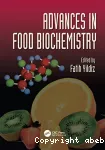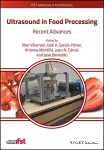Adresse
Infodoc : Réseau des bibliothèques et centres de documentation d'AgroParisTechFrance
contact

Catégories
Documents disponibles dans cette catégorie (16)
 Ajouter le résultat dans votre panier
Visionner les documents numériques
Faire une suggestion Affiner la recherche Interroger des sources externes
Ajouter le résultat dans votre panier
Visionner les documents numériques
Faire une suggestion Affiner la recherche Interroger des sources externes
 Livre
Livre978-1-138-11548-41 vol. (XIV-507 p.)
1 vol. (XIV-507 p.)ISBN : 978-1-138-11548-4 
 Thèse
Thèse
 Thèse1 vol. (pagination discontinue)
Thèse1 vol. (pagination discontinue)
1 vol. (pagination discontinue)
 Livre
Livre978-0-323-28179-91 vol. (XVII-565 p.)
1 vol. (XVII-565 p.)ISBN : 978-0-323-28179-9 
 Thèse1 vol. (XXIV-201 p.)
Thèse1 vol. (XXIV-201 p.)
1 vol. (XXIV-201 p.)
 Thèse1 vol. (179 p.)
Thèse1 vol. (179 p.)
1 vol. (179 p.)
 Thèse
Thèse
 Thèse1 vol. (258-[7] p.)
Thèse1 vol. (258-[7] p.)
1 vol. (258-[7] p.)
 Livre
Livre978-1-4987-4485-01 vol. (XVII- 1029 p.)
1 vol. (XVII- 1029 p.)ISBN : 978-1-4987-4485-0 
 Livre19 EUR
Livre19 EUR978-2-10-006399-4
Prix : 19 EUR ISBN : 978-2-10-006399-4 
 Thèse1 vol. (180 p.)
Thèse1 vol. (180 p.)
1 vol. (180 p.)
 Livre
Livre978-2-7430-0243-51 vol. (XXXII-1311 p.)
1 vol. (XXXII-1311 p.)ISBN : 978-2-7430-0243-5 
 Thèse1 vol. (141+[29] p.)
Thèse1 vol. (141+[29] p.)
1 vol. (141+[29] p.)
 Mémoire
Mémoire
 Article
ArticlePromouvoir des approches globales pour optimiser les traitements
in L'Eau, l'industrie, les nuisances , n° 379, 01/02/2015

 Livre
Livre978-1-118-96418-71 vol. (XXII-515 p.)
1 vol. (XXII-515 p.)ISBN : 978-1-118-96418-7





